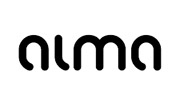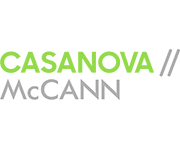The $2 trillion global wellness market gets a millennial and Gen Z glow-up
May 31, 2025

As this shift takes hold, it’s influencing the direction of the $2 trillion global wellness industry, which is expanding beyond its core categories. Even though younger demographics may be pushing the industry forward, older consumers, too, are becoming more interested in an expanding definition of wellness.
In our fourth year fielding our Future of Wellness research, which focuses on six dimensions of wellness—health, sleep, nutrition, fitness, appearance, and mindfulness—we surveyed more than 9,000 consumers across China, Germany, the United Kingdom, and the United States. Two big ideas stood out in this year’s research: Younger consumers are conceptualizing wellness in new ways, and wellness is showing up in new places.
Our latest findings reveal the ways in which younger consumers are redefining the landscape, the five consumer segments that make up today’s wellness customer base, and six subcategories poised to grow.1
Younger generations are spending disproportionately on wellness
Wellness is more important to consumers than ever. In the United States alone, we estimate that it represents more than $500 billion in annual spend, growing at 4 to 5 percent each year. (Despite macroeconomic volatility through the first half of 2025, we believe the wellness category is resilient. See the sidebar, “How resilient is the wellness space?”) Meanwhile, 84 percent of US consumers say wellness is a “top” or “important” priority (in the United Kingdom, that figure is 79 percent, while it soars to 94 percent in China).
Younger generations especially are increasingly prioritizing wellness. Nearly 30 percent of Gen Zers (people born between 1997 and 2012) and millennials (born between 1981 and 1996) in the United States report prioritizing wellness “a lot more” compared with one year ago, versus up to 23 percent of older generations. This may be due to several factors: Younger generations self-report higher levels of burnout and worse overall health compared with older people but are also more exposed to health-related content on social media (where they are more likely to be influenced to make a wellness-related purchase than older generations are).
The burgeoning prioritization of wellness is translating into dollars spent. While Gen Zers and millennials make up just over a third (36 percent) of the adult population in the United States, they drive more than 41 percent of annual wellness spend. Compare that with consumers aged 58 and older: These consumers make up 35 percent of the population but only 28 percent of wellness spending. To be sure, older consumers still represent a meaningful opportunity for wellness players, especially in advanced markets with aging populations.
Gen Zers and millennials are not a homogenous group; there are nuanced differences in their perspectives on wellness. For example, although both groups rank sleep and health as their top two wellness priorities (but in a different order), Gen Zers give “better appearance” the number three slot, whereas millennials care more about mindfulness (Exhibit 1).

Together, Gen Z and millennials’ wellness needs diverge from those of Gen Xers and baby boomers. For example, younger consumers place higher importance on sexual health and skin and hair care than older generations do (Exhibit 2).

Despite the wellness sector’s growth over the past several years, consumers report that some of their wellness needs—including cognitive health, mindfulness and mental health, and longevity—remain unmet. Younger consumers, particularly Gen Z, report feeling these gaps more strongly than other age groups, especially when it comes to mental, cognitive, heart, and gut health.
There are a number of reasons for these gaps. In the United States, younger consumers self-report feeling “almost always stressed” at a higher rate than other generations (40 percent of Gen Z versus 23 percent overall), which may contribute to higher levels of dissatisfaction with existing mental health solutions. A mismatch in product marketing and positioning could also contribute to the need gaps: Heart health and cognitive solutions may be targeted toward older consumers, even though younger generations also have unmet needs in these areas. Social media exposure could also magnify the importance of some subcategories, such as gut health.
There are also differences in how younger and older consumers spend across wellness categories. While purchase rates for essential consumer health categories (such as oral care, cough and cold medication, and personal hygiene) are similar across demographics, younger consumers tend to purchase across a wider range of discretionary products (Exhibit 3), including health tracking devices, massage tools, IV drips, and beauty and mindfulness apps. They are more open to experimentation and interested in testing digital solutions. Older generations, for their part, overindex on a smaller subset of health products such as vitamins, analgesics, and eye care but underindex on most discretionary categories. This could be because older consumers may be less familiar with newer wellness offerings.


A common question arises when analyzing Gen Z spending habits: Will Gen Z’s preferences shift to resemble those of older generations over time, or will they redefine norms for all consumers as they grow older?
A look at spending across wellness categories offers some clues. Gen Zers and millennials purchase more types of wellness products and services per year than older adults. Some are connected to specific life stages (such as infant care and menstrual products), so spending on these products will decrease as Gen Zers and millennials age. But consumers in all age groups are also spending heavily on other products and services—such as health tracking devices, wellness retreats, and energy drinks—that are not tied to particular life stages, indicating a broader cultural shift in how people think about wellness.
Our survey finds that younger generations today are more likely to travel for wellness retreats (trips intended to improve mental, physical, or spiritual well-being), for example, though more travel players are now tailoring their services to older consumers, too, such as by offering off-season wellness retreat packages targeted to retirees. This suggests that many of the wellness preferences of younger consumers today could become mainstream across all age groups.
Wellness consumers can be grouped into five segments
While it’s helpful to understand how different generations think about wellness, businesses interested in entering the wellness space should also consider a range of demographic and attitudinal factors to better target and service consumer groups.
Our research finds that consumers tend to fall into five different wellness segments: maximalist optimizers, confident enthusiasts, health traditionalists, health strugglers, and wellness shirkers. Building on our previous research, this consumer segmentation considers a broader range of consumer attitudes toward health and wellness, recognizing the rapidly evolving and expanding nature of the category. (The following segments are listed below according to their enthusiasm for and prioritization of wellness in their lives.)
Gen Z and millennials are more likely to be maximalist optimizers, digitally savvy consumers who experiment with a wide range of health and wellness products and conduct extensive research to find what works for them. This consumer segment represents roughly 25 percent of wellness consumers and more than 40 percent of market spend. They seek out solutions that are science-backed and look to doctors for advice, though they are also more likely to be influenced by social media than other segments are. They are twice as likely as the overall population to use natural and alternative products, as well as cutting-edge digital technologies and health-tracking devices—if they have confidence that the products will work for them. They prioritize quality over price, ranking it their top buying factor, while actively seeking out products that address their needs and deliver value.
Confident enthusiasts, which account for the smallest share of wellness consumers (11 percent) and 15 percent of market spend, heavily prioritize wellness but are more self-assured than maximalist optimizers. They are fitness-obsessed, purchasing gym memberships, fitness apps, at-home fitness equipment, and sports nutrition products at higher rates than other consumer groups do. They tend to conduct extensive research before purchasing wellness solutions but stick with what works for them once they find it, making them a high-lifetime-value segment for the brands that make it into their wellness routines.
To win with maximalist optimizers and confident enthusiasts, health and wellness players should communicate the science behind their offerings in an accessible way. This requires building a strong presence in the channels that resonate most with these consumer segments: video (both nonlinear and traditional television), digital customer reviews, and social media advertising.
Health traditionalists tend to be older consumers who care about health and wellness but prioritize simplicity and practicality. They make up 20 percent of wellness consumers and 13 percent of market spend. Their focus is on eating healthfully, taking vitamins and supplements, and maintaining an exercise regimen, but they are less open to experimentation or novel technologies or solutions, such as weight management prescriptions, telehealth services, or AI-enabled products. Earning this consumer’s purchase is all about delivering on the basics. They are not likely to purchase a wellness product because something is new or cool. Instead, health traditionalists laser in on nutrient and ingredient labels. Wellness players should position themselves accordingly and emphasize high-quality and clean ingredients when appropriate.
Health strugglers and wellness shirkers place a lower priority on health and wellness solutions. They account for 24 percent and 20 percent of consumers, respectively, and 22 percent and 10 percent of market spend, the smallest share of spend of any group. Strugglers spend slightly more on wellness than traditionalists but tend to feel stressed about their health and struggle with motivation, particularly when it comes to maintaining or losing weight. They may have health and wellness goals but are more likely to struggle to meet them. Making it easier and less intimidating for these consumers to manage their health is key. Break down service offerings or create incentives to improve motivation and accountability (gamification is one example for how to do so). Wellness shirkers, on the other hand, are less interested in monitoring their health, buy only the essentials, and are very price sensitive.
Six areas of growth in the wellness space
Several of the health and wellness trends we identified in previous years, including a growing focus on women’s health, health at home, and biomonitoring, remain relevant today. In addition to these trends, notable pockets of growth stood out in this year’s survey results: functional nutrition, healthy aging, appearance and aesthetics, in-person wellness services, weight management, and mindfulness.
The functional-nutrition space—made up of food and beverages that claim to deliver health benefits—is expanding. In the United States, United Kingdom, and Germany, approximately half of consumers and two-thirds of Gen Z and millennials said they purchased functional-nutrition products last year. In China, the share of consumers who purchased those products is even higher. More companies are introducing new products, such as fortified foods and supplements, to meet demand. Energy, gut health, immunity, and muscle, bone, and joint support are the most sought-after benefits (Exhibit 4).
This trend has been fueled by the shift toward food as preventative medicine, as consumers are becoming more aware of how food and beverage choices affect their health. Rather than only thinking of healthy food as foods that are free from certain components, such as gluten or sugar, consumers are now looking for foods that include high-value components, such as protein, nootropics,2 or turmeric.
Our research indicates that consumers take a broad view of functional nutrition, which encompasses fresh fruits and vegetables, fermented foods, and protein powders, as well as emerging subcategories like super greens, mushrooms, adaptogens,3 and pre- and probiotic drinks.
From protein-packed potato chips to cognition-enhancing mocktails, a flurry of innovation has hit the functional-nutrition space. Going forward, the products likely to be most successful are not simply healthier alternatives to existing offerings (such as better-for-you candy), but those that exist at the intersection between supplements and food. The taste and texture of these products are table stakes.
The lines between beauty and wellness continue to blur. A growing number of beauty products feature active ingredients that have health benefits (such as arnica to reduce inflammation or CBD to promote calmness), while more consumers say they are interested in using ingestible beauty supplements that promote wellness from within (such as collagen gummies for skin, hair, and nails).
As shown in Exhibit 1, Gen Zers place a higher priority on appearance than other generations do. “Better appearance” shifted from the sixth-most-important dimension of health and wellness for US Gen Z consumers in 2023 to the third-most-important dimension in 2024; Gen Zers in other markets placed a greater emphasis on appearance as well. These consumers are also purchasing beauty-related products at a higher rate than other generations are. Social media has helped drive this trend.
Spending on cosmetic procedures also grew in the past year. In the United States, 46 percent of consumers (and 53 percent of Gen Z consumers) reported that they spent more on cosmetic procedures in 2024 than in 2023. Looking ahead, Gen Z expects to spend more on cosmetic procedures over the next year. Younger consumers are increasingly seeking anti-aging treatments they consider “preventative,” and are doing so at a younger age than the generations before them did.
As the overlap between beauty and wellness continues to increase, partnerships will become an important driver of relevance and growth for brands. Effective strategies include comarketing complementary products—such as skin care paired with at-home aesthetic devices like red-light therapy masks—and forging unique distribution collaborations, such as those between beauty and wellness players (supplements could be sold in beauty retailers, for example, while beauty products could be sold in fitness chains or health clinics). Partnerships with technology companies also present an opportunity: Using gen AI, beauty and wellness brands can deliver personalized recommendations that enhance the consumer experience.
In line with our findings last year, demand for products and services to support longevity continues to grow. Up to 60 percent of consumers across markets report that healthy aging is a “top” or “very important” priority. This can mean a range of things to consumers, from supporting cognitive function to preserving one’s independence, living a long life, preventing chronic disease, and keeping energy levels high. A range of products and services have emerged to address these needs, including skin care products targeting long-term skin health and wrinkle prevention, supplements that claim to slow cellular aging, epigenetic age-testing kits, virtual physical therapy solutions, and more.
Longevity-focused products and services are not only for older consumers. There has been a cultural shift among younger generations to take a proactive approach to healthy aging rather than a reactive one. Longevity-focused products and services will continue to appeal to these younger consumers, but retaining these consumers is not without its challenges. Players should emphasize the short-term benefits of their products, in addition to the longer-term merits: a product that claims to improve mitochondrial function in the long term, for instance, could also highlight its immediate benefits, such as higher energy levels or reduced fatigue. Reminding older consumers of their age, meanwhile, could be off-putting to them, so longevity product marketing should focus on meeting specific needs rather than simply making consumers “feel younger.”
Demand for in-person services—spanning boutique fitness, wellness retreats, and IV treatments—has continued to rise as consumers prioritize experiences. Across all the markets we surveyed, consumers reported purchasing more in-person services in this year’s survey compared with the prior year, and we expect this trend to continue.
One standout in our research: boutique fitness classes and wellness retreats. Net purchase intent4 for these offerings was 30 percent, indicating more consumers could spend on these services. (The trend toward purchasing more of these offerings in the next year appears to be strongest in the United States; in the United Kingdom and Germany, for instance, consumers expressed interest in spending on IV drip treatments.) Fifty-six percent of in-person service purchasers in the United States reported traveling two or more hours for wellness retreats and 45 percent reported traveling that same amount of time for thermal therapies or yoga classes. Nearly 60 percent of consumers who traveled for health and wellness treatments in 2024 also said they expect to travel for these treatments in the next year.
As consumers seek out opportunities to reset, digitally detox, and enhance their mental, physical, and spiritual well-being, there are opportunities for travel players (including hotels, cruise liners, and travel planners) to attract new customers. However, consumers also want to learn skills they can use beyond their stay, such as meditation, nutritional regimens, or fitness practices. In response, wellness and travel companies could create more tailored offerings, such as wellness coaches (who engage consumers pre- and post-trip), digitally enabled interventions (such as sleep tracking), and “edutainment” (educational and engaging programming, like menopause-focused retreats that teach women about hormonal health accompanied by treatments).
Weight management continues to be a focus for consumers around the world. More than one in eight people globally live with obesity,5 and younger consumers in particular report challenges managing their weight. In the United States, 44 percent of Gen Z consumers find it challenging to stay motivated to exercise (compared with 37 percent of consumers overall). These rates are similar to what we observed in the United Kingdom and China, though it is older consumers in Germany who say they struggle with staying motivated to exercise. Meanwhile, more than a third of Gen Z and millennial consumers in the United States and the United Kingdom find it very difficult to manage their weight (versus 27 percent overall).
While exercise remains the most common weight management intervention across markets, others are rising in popularity, including nutritionist-led weight management programs, meal plans, and prescription weight loss medications such as GLP-1s (Exhibit 5).
The wellness ecosystem that has emerged as a byproduct of the GLP-1 boom is driving momentum in this subcategory. Patients who use GLP-1s are focused on meeting their nutritional and health needs while reducing caloric intake, which means that protein- or nutrient-fortified foods, gut health products intended to address digestive discomfort, and workout programs focused on building and maintaining muscle mass are each positioned to grow.
Whether due to burnout, climate and economic anxiety, social media overuse, or some combination of these factors, young people across markets report having worse mental health than older generations do. But our research finds that they are actively seeking solutions to improve it. Forty-two percent of Gen Z and millennials in the United States say mindfulness is a “very high priority” (versus 29 percent of baby boomers).
There are generational differences in how consumers think about mental health. Younger generations tend to be more attuned to their mental health and open to trying a range of solutions to address it. While older generations tend to think of mental health solutions as those that are explicitly tied to treatment (such as talk therapy), younger generations are adopting a range of behaviors and making unexpected purchases, from skin care regimens to sleep hygiene, fitness routines, and socializing, in the name of improving their mental well-being.
One of the challenges for companies in the mindfulness and mental health space is how to achieve scale. While digital mindfulness apps have made mental health solutions more broad-reaching and accessible, competition is steep and barriers to entry are low. Other wellness-oriented apps, such as those in the fitness or nutrition spaces, compete directly with mental health players when they add mindfulness or meditation content to their platforms. Digital mental health players should ensure they have a clear value proposition, with programming targeted to specific audiences and need states, rather than focusing on general mental health support. Large-scale partnerships can help to boost awareness and brand equity. One mental health player partnered with a global streaming platform to distribute content about meditation, which increased app sign-ups by 70 percent over a year and a half.































